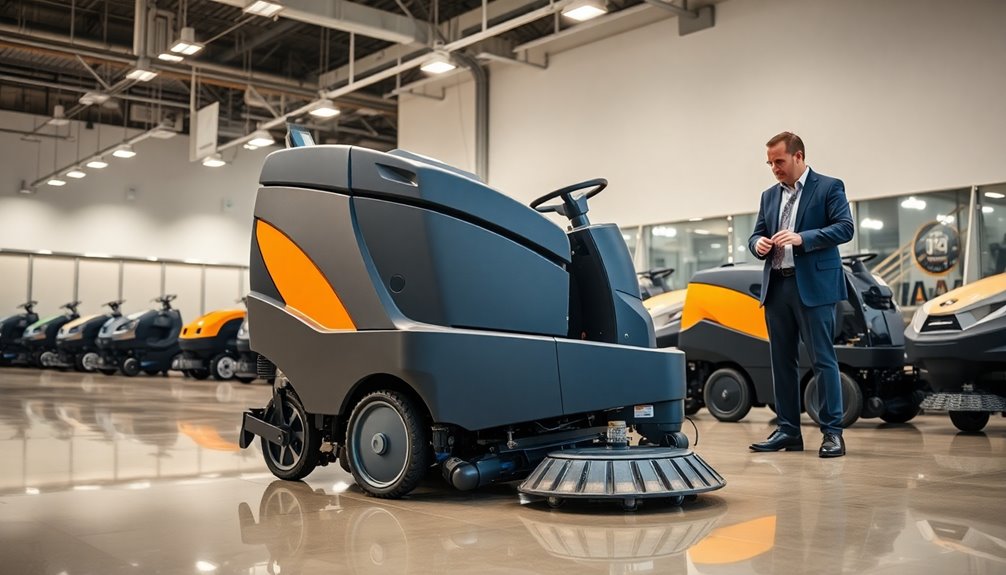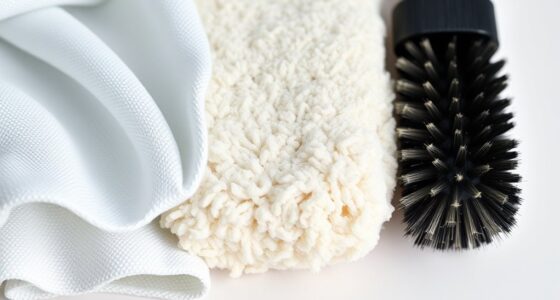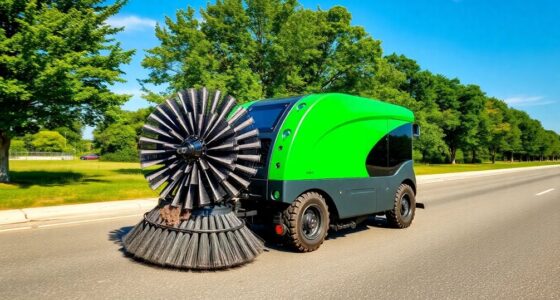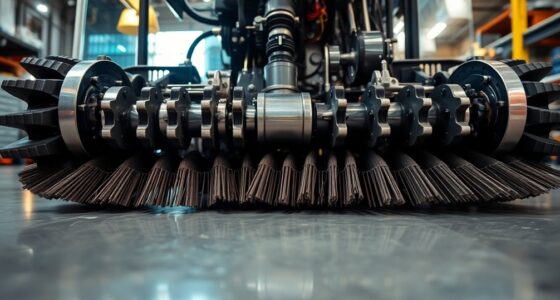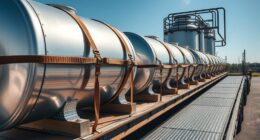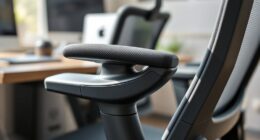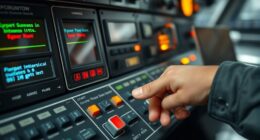To choose the right commercial sweeper for your business, start by evaluating your cleaning needs and area size. Identify the floor types and common debris you'll encounter. Compare sweepers and vacuums based on their efficiency for larger debris versus fine particles. Consider brush types and maneuverability for tight spaces. Versatility is key, so look for machines that can adapt to different surfaces. If you want to explore more tips and insights, keep going for further information.
Key Takeaways
- Assess the size and layout of your cleaning area to determine whether a walk-behind or ride-on sweeper is most suitable.
- Evaluate the floor types and common debris in your facility to select the appropriate brush types for effective cleaning.
- Compare the productivity rates of different models to ensure the sweeper aligns with your cleaning needs and area size.
- Check maneuverability requirements like aisle widths and doorway dimensions to avoid equipment that cannot navigate your space.
- Consider the versatility of the sweeper, including interchangeable brushes and automated features, to adapt to varying cleaning tasks.
Understanding Your Cleaning Needs
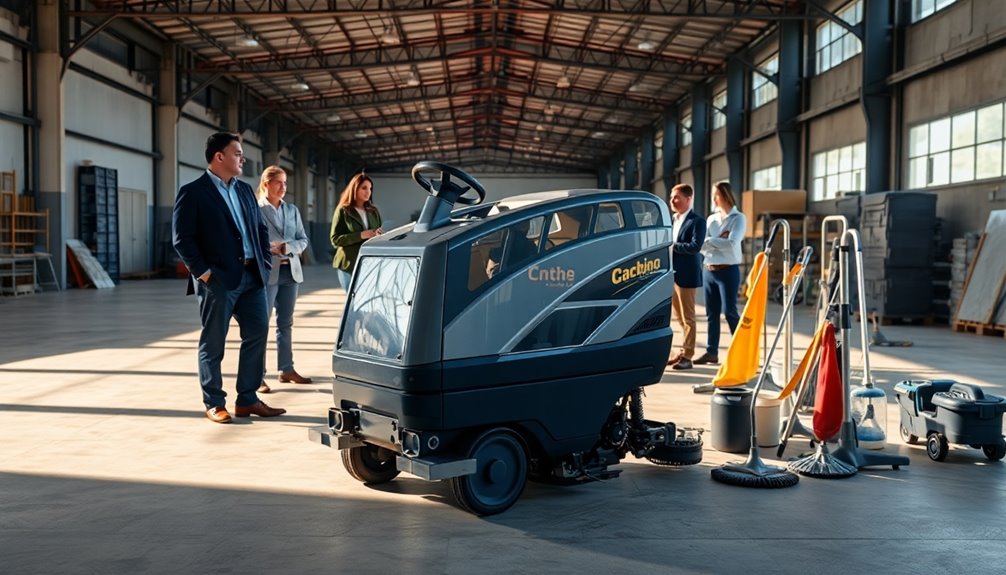
When considering a commercial sweeper machine, how do you determine what suits your cleaning needs best?
First, assess the size of your cleaning area. A walk-behind sweeper might be perfect for smaller spaces, while a ride-on model could enhance efficiency in larger areas.
Next, identify the types of debris you typically encounter. Heavy debris may need stiffer brushes, whereas fine dust calls for a vacuum system.
Don't forget to evaluate the compatibility of brush types with your floor surfaces. This guarantees effective cleaning without damaging your floors.
Finally, consider the cleaning speed and efficiency required. Matching the productivity rates of various models to your operational demands will help you make an informed choice.
Assessing Floor Types and Surfaces
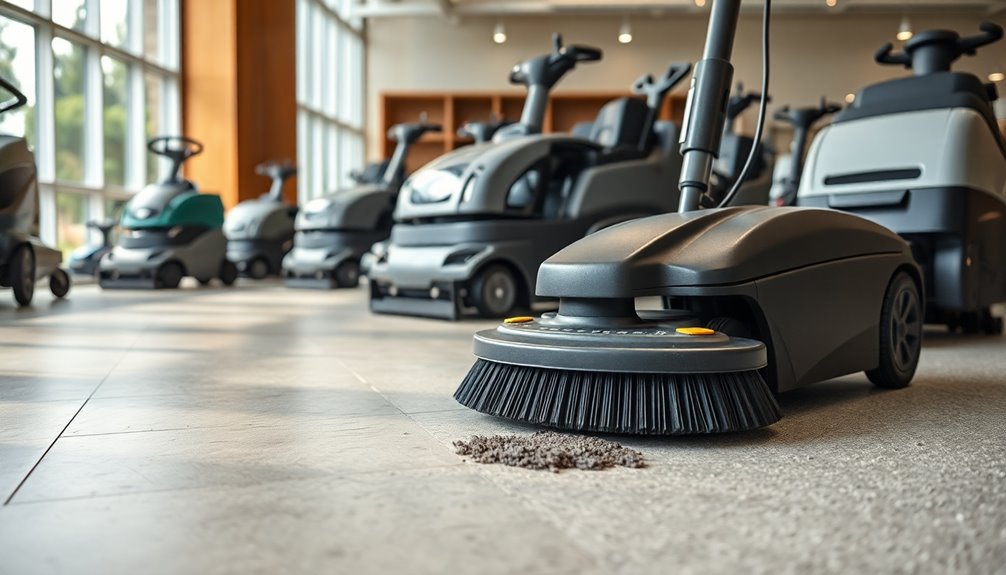
When you're choosing a commercial sweeper, understanding the compatibility with your floor surfaces is key.
Different materials, like concrete or carpet, require specific brush types to avoid damage and guarantee effective cleaning.
Additionally, consider the area size; a larger space may need a machine that's efficient enough to handle the workload without compromising cleanliness.
Surface Material Compatibility
Understanding the compatibility between your commercial sweeper machine and the various floor surfaces is essential for achieving the best cleaning results. Different surfaces require specific brush types: stiff brushes work best on concrete, while softer brushes are ideal for carpets.
| Floor Surface | Recommended Brush Type | Notes |
|---|---|---|
| Concrete | Stiff Brush | Effective for tough grime |
| Carpets | Soft Brush | Prevents damage to fibers |
| Uneven Surfaces | Cylindrical Brush | Cleans without pre-sweeping |
Automatic floor scrubbers with disc-shaped brushes excel on hard surfaces like parking lots. Always avoid metallic brushes on sensitive surfaces to prevent damage. Ensuring proper compatibility will enhance cleaning efficiency and prolong your machine's life. Additionally, understanding toilet maintenance can provide insights into regular upkeep for equipment longevity.
Area Size Considerations
Choosing the right commercial sweeper machine involves considering the size of your cleaning area and the types of flooring present. For larger spaces, ride-on machines offer efficient cleaning, while walk-behind models suit smaller, intricate areas.
Think about the flooring type—whether it's concrete, tile, or carpet—as this impacts compatibility and performance. Different brush types enhance cleaning; stiff brushes work well on concrete, whereas softer brushes are better for carpets.
Don't forget to test the equipment in low-impact areas to verify it won't damage the flooring.
Finally, evaluate aisle and doorway sizes to ascertain your chosen machine can navigate the designated area effectively, guaranteeing you achieve peak cleaning results throughout your facility.
Evaluating the Size of Your Cleaning Area
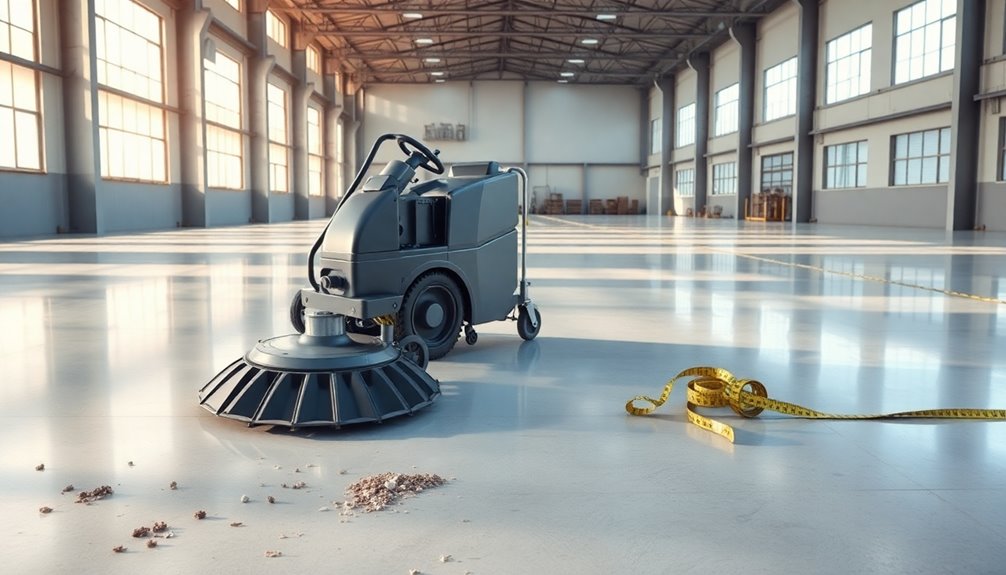
Evaluating the size of your cleaning area is essential for selecting the right commercial sweeper machine. Start by examining the total square footage; larger spaces may require a ride-on sweeper, while smaller areas are better suited for walk-behind sweepers.
For expansive areas like warehouses, consider models such as the SW28R, which can cover up to 97,950 square feet per hour, saving you time.
Don't forget to evaluate your layout, including narrow aisles and doorways, ensuring the equipment can navigate effectively.
Additionally, identify specific zones that may need different types of sweepers based on surface type and debris. Conducting trials in less critical areas can help you determine the best machine for your cleaning needs before making a final decision.
Identifying Common Debris and Dirt
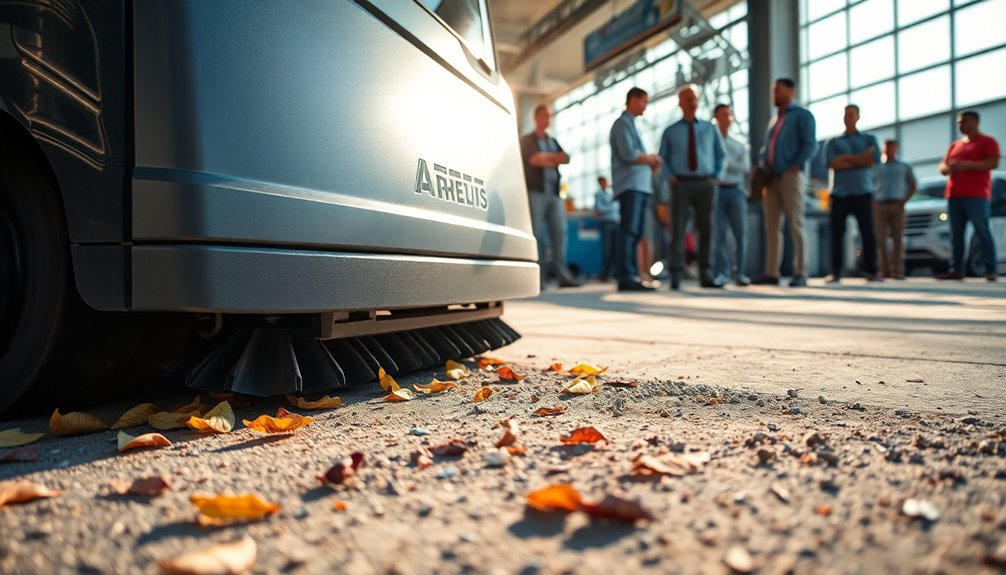
Once you've assessed the size of your cleaning area, the next step is pinpointing the common debris and dirt you'll encounter.
Identifying the type of debris is vital because different sweepers are tailored for specific materials. For heavy debris, choose a model with stiffer brushes for effective pickup. If wet debris is common, look for sweepers equipped with a bypass function for better performance.
Light debris like dust can benefit from vacuum systems to enhance cleaning efficiency. Additionally, a filter shaker function is important in environments with high dust accumulation.
Comparing Commercial Sweepers and Vacuums
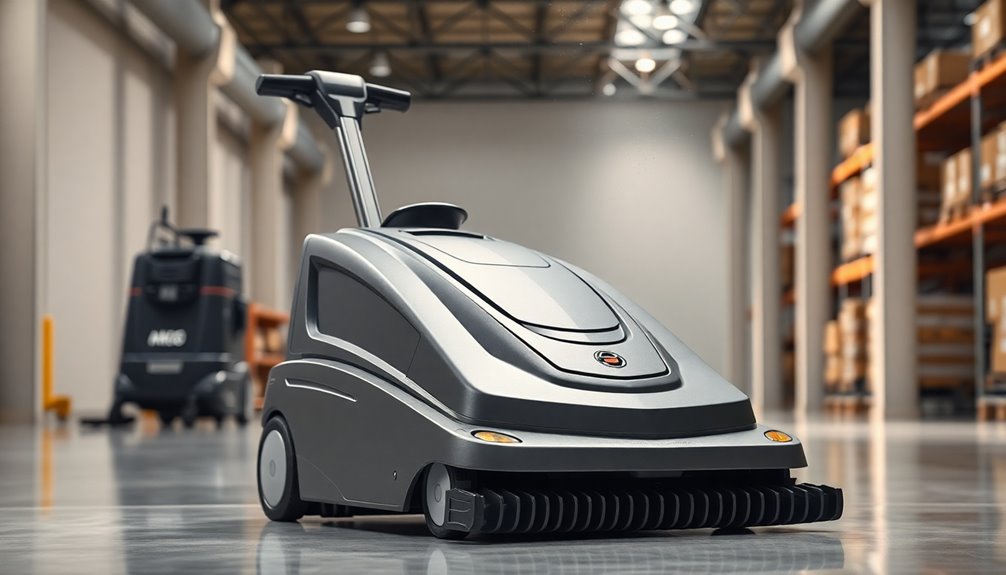
When you're choosing between a commercial sweeper and a vacuum, consider the type of debris you'll be dealing with and the size of the area you need to clean.
Sweepers are great for larger debris in expansive spaces, while vacuums shine in tighter spots with finer particles.
Understanding these differences can help you pick the right tool for your cleaning needs.
Debris Type Considerations
Choosing the right cleaning equipment hinges on the type of debris you regularly encounter.
When considering debris type considerations, Commercial Sweepers excel at handling larger debris like dust and dirt, making them perfect for expansive areas like warehouses. If your environment includes heavier debris, opt for sweepers with stiffer brushes for effective pickup.
On the other hand, vacuum systems are better suited for lighter debris and fine dust, especially in offices and healthcare settings. For wet spills, look for sweepers with a bypass function to manage moisture efficiently.
Surface Area Compatibility
The right surface area compatibility is essential when deciding between commercial sweepers and vacuums.
If you're dealing with larger spaces like warehouses, ride-on sweepers are your best bet, as they cover ground quickly and handle larger debris effectively.
However, for smaller or intricate areas, walk-behind machines offer better maneuverability.
When considering cleaning equipment, think about the flooring type; different brush options are designed for various surfaces, from concrete to carpets.
Testing the equipment in low-impact areas can help you ascertain compatibility, preventing potential damage while maintaining effective cleaning.
Ultimately, matching your cleaning equipment to your specific surface area needs will enhance efficiency and prolong the life of your machinery.
Cleaning Efficiency Comparison
Selecting the right cleaning equipment not only hinges on surface area compatibility but also on the efficiency each machine offers for specific tasks.
When comparing sweepers and vacuum cleaners, consider these key points:
- Debris Size: Sweepers handle larger debris effectively, while vacuums excel at fine dust.
- Productivity: The Trident SW24R sweeper can clean up to 54,900 square feet per hour, greatly enhancing productivity.
- Air Quality: Vacuum cleaners are better at improving air quality by capturing fine particles, essential in sensitive areas like hospitals. Additionally, HEPA filtration in vacuums ensures effective removal of allergens and pollutants.
- Surface Types: Choose based on your environment; sweepers suit wide spaces like warehouses, while vacuums fit smaller areas like offices.
Exploring Efficiency and Speed Ratings
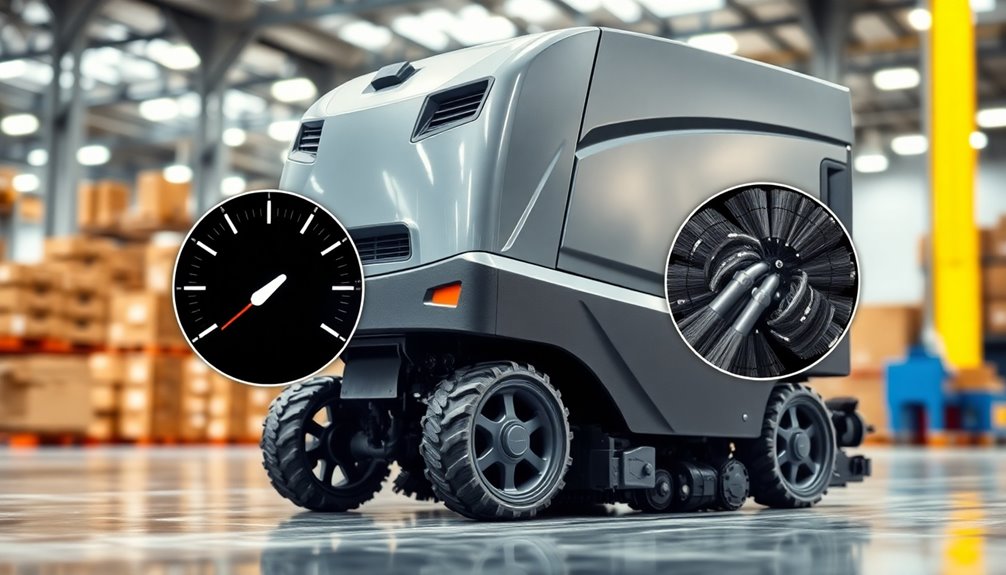
How can you assure your cleaning operations are both efficient and fast?
It's crucial to explore the efficiency and speed ratings of different commercial sweepers. For instance, the Trident SW28R boasts an impressive productivity rate of 97,950 sq ft/hr, perfect for larger areas.
If you're working in medium-sized spaces, models like the SW24R and SW20T offer a balanced productivity of 54,900 sq ft/hr, combining power with efficiency.
Selecting the right model guarantees you align your equipment with your area size and cleaning needs.
Higher efficiency not only reduces cleaning times but also enhances overall results.
Understanding these ratings helps you make informed decisions, boosting your productivity and streamlining your cleaning operations.
Analyzing Brush Types and Features
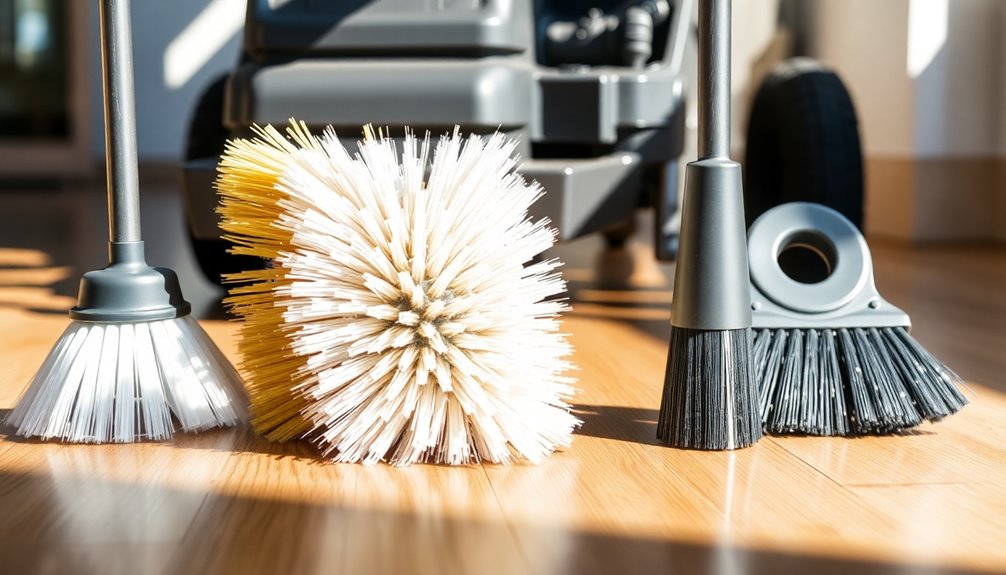
Choosing the right brush type can greatly enhance your cleaning efficiency. Different brush types cater to various surfaces and debris. Here are key features to evaluate when selecting your commercial vacuum:
- Stiff Brushes: Ideal for heavy debris on concrete.
- Softer Brushes: Best for delicate flooring like carpets.
- Tool-Free Brush Changes: Look for models like Trident sweepers that allow quick swaps for different cleaning needs.
- Filtration Systems: Options for dust collection and damp debris pickup can improve air quality and efficiency.
Pay attention to the materials used in brushes, as avoiding metallic options can prevent unwanted fibers and rust stains on floors.
Choosing wisely can make a significant difference in your cleaning routine.
Considering Equipment Maneuverability
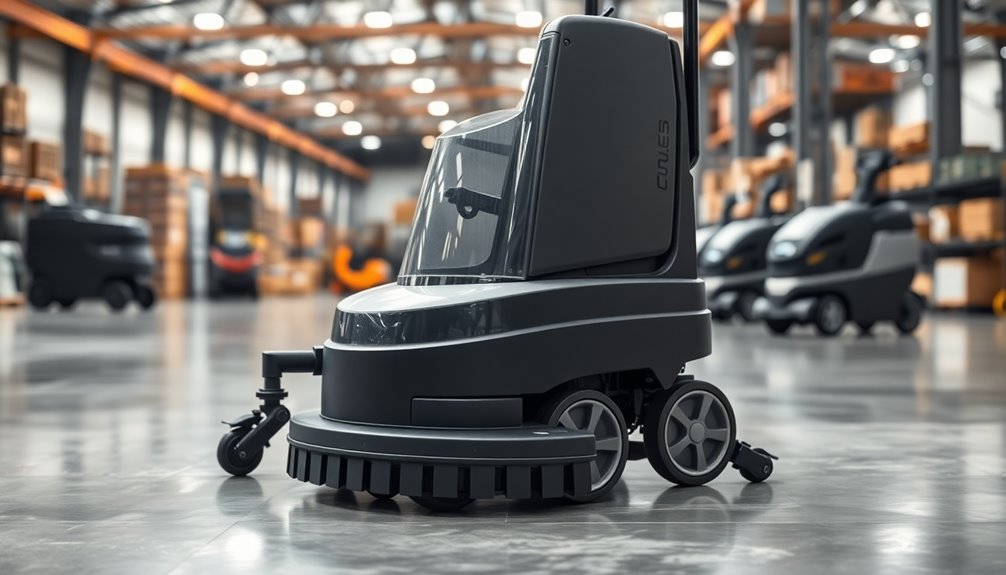
When choosing a commercial sweeper, you need to assess aisle widths and evaluate the turn radius for effective maneuverability.
Consider how well the equipment can navigate tight spaces, especially in crowded areas.
Making sure your sweeper fits these criteria can save you time and prevent damage during use.
Assessing Aisle Widths
Evaluating aisle widths is essential for ensuring your commercial sweeper can navigate effectively in your space.
To choose the right machine, consider the following:
- Minimum Widths: Walk-behind sweepers need at least 36 inches, while ride-on models typically require 48-60 inches.
- Doorway Dimensions: Measure all doorways and obstacles to avoid equipment that can't pass through.
- Obstacles: Identify any fixed items in your cleaning area that may hinder maneuverability.
- Testing: Whenever possible, test the sweeper in your facility to assess how well it can handle your specific aisle widths.
Evaluating Turn Radius
After evaluating aisle widths, the next factor to contemplate is the turn radius of your commercial sweeper machine. A smaller turn radius allows for easier navigation around obstacles and corners, making it essential for tight spaces.
Walk-behind sweepers typically offer a tighter turn radius than ride-on models, which is perfect for cleaning narrow aisles and congested areas. When selecting your machine, consider how the turn radius aligns with the dimensions of your cleaning area, especially in environments like retail stores or warehouses.
While a larger turn radius may be beneficial in open spaces, it can hinder efficiency in smaller areas. Manufacturers often provide turn radius specifications, so use this information to select the most appropriate model for your needs.
Navigating Tight Spaces
While traversing tight spaces, equipment maneuverability plays a critical role in maintaining efficiency and effectiveness during cleaning.
To guarantee you choose the right machine, consider these key factors:
- Size: Opt for walk-behind sweepers that fit your cleaning area; bulky machines can hinder movement.
- Turning Radius: Select models with a smaller turning radius for better navigation around corners and obstacles.
- Aisle Width: Measure the width of aisles to confirm your sweeper can easily fit through without damage.
- Testing: Before full deployment, test the equipment in low-impact areas to guarantee it handles your specific layout.
Prioritizing Versatility and Functionality
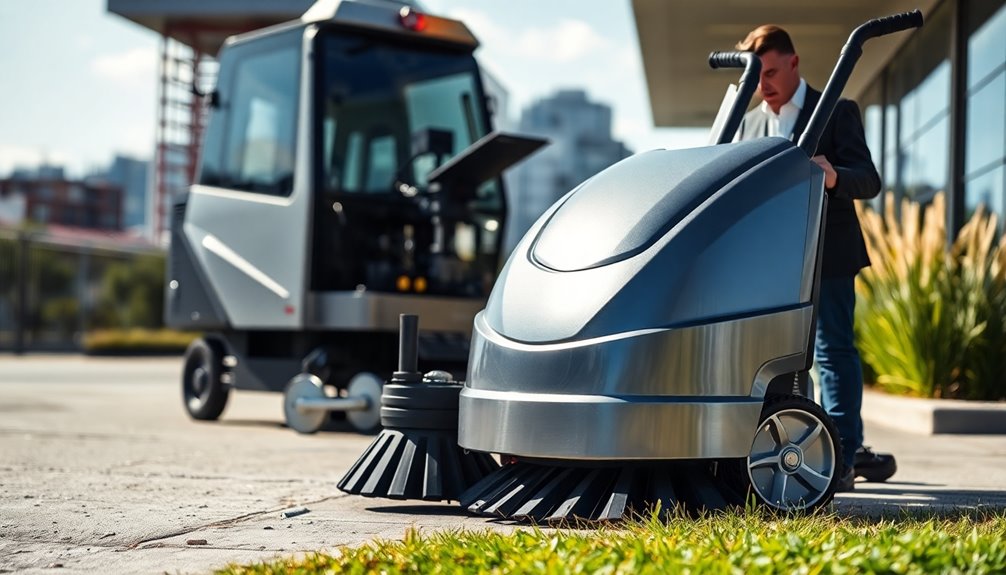
How can you guarantee your commercial sweeper meets diverse cleaning needs?
Look for versatile floor sweepers that handle various surfaces, from hard floors to carpets. Choose machines with interchangeable brush options—stiff brushes for heavy debris and softer ones for delicate areas—to enhance functionality.
Automated features like programmable settings and multiple cleaning modes allow you to tailor routines for different environments and debris types. A sweeper capable of managing both wet and dry debris expands its versatility, reducing the need for multiple machines.
Finally, evaluate size and maneuverability; a compact design with a tight turning radius will help you navigate smaller spaces effectively, ensuring you maximize your cleaning efficiency while maintaining ease of use.
Requesting Demonstrations and Expert Advice
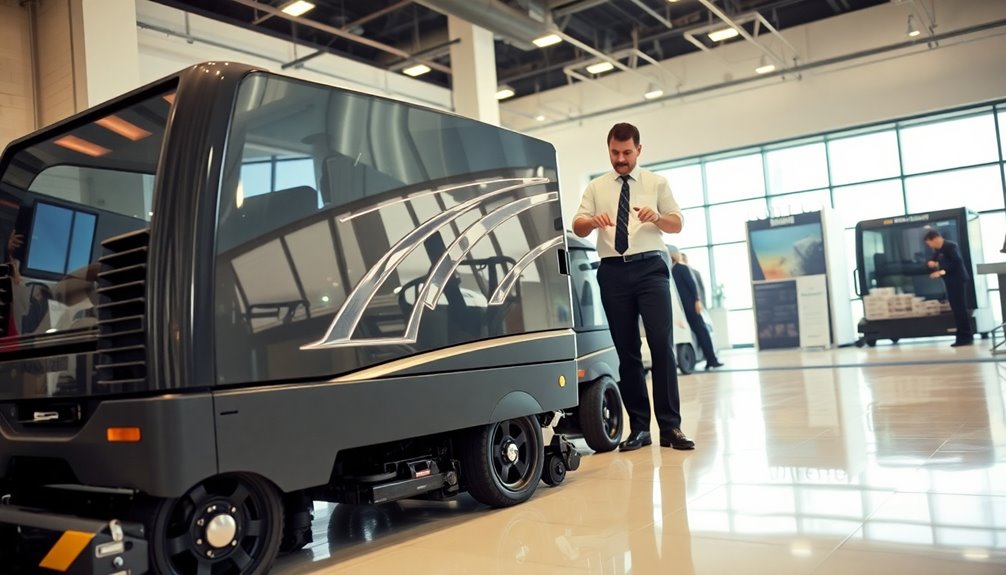
Requesting a demonstration of commercial sweepers can be a game-changer when selecting the right machine for your needs.
Here's how to maximize the value of your demo:
- Assess Performance: Contact 1-844-326-5570 for a free demonstration tailored to your surfaces.
- Evaluate Features: Check brush types and debris capacity to confirm they meet your requirements.
- Engage with Experts: Use the opportunity to ask sales representatives for expert advice specific to your cleaning environment.
- Observe in Action: Watching the machine operate helps identify potential challenges and advantages.
Frequently Asked Questions
What to Look for When Buying a Sweeper?
When buying a sweeper, you'll want to assess the size of your cleaning area first.
Decide if a walk-behind or ride-on model fits best.
Consider the type of debris you'll be handling; different sweepers work better with specific materials.
Check the debris bin capacity to minimize downtime, and confirm the sweeper is compatible with your flooring type.
Finally, look for features like a filter shaker to improve dust collection and air quality.
What Is the Best Commercial Floor Scrubber?
Picture a gleaming floor, sunlight dancing off its surface, inviting customers in.
The best commercial floor scrubber for you depends on your space. If you've got a vast warehouse, a robotic scrubber might be your ally, tirelessly cleaning while you focus on business.
For smaller areas, a walk-behind model offers agility. Consider the brush type too; it's essential for effective cleaning without harming your floor.
Make sure it suits your specific flooring needs.
Do You Need a License to Operate a Floor Scrubber?
You don't typically need a specific license to operate a floor scrubber, but you should check your local regulations.
Most employers require safety training to guarantee you understand the equipment and its operation.
It's essential to stay compliant with any local laws and to have documentation of your training and any certifications.
This not only protects you but also your employer from potential workplace accidents and liability issues.
What Is the Difference Between a Floor Scrubber and a Floor Sweeper?
Envision this: you're in a medieval castle, and you need to keep those stone floors spotless! A floor scrubber's your knight in shining armor, using water and cleaning solutions to tackle stains.
In contrast, a floor sweeper acts like a trusty squire, gathering dirt and dust without moisture.
Scrubbers shine in high-hygiene areas, while sweepers excel in larger spaces. Knowing the difference can help you pick the right tool for your cleaning quest!
Conclusion
Ultimately, choosing the right commercial sweeper machine hinges on understanding your unique needs and environment. It's a common belief that one size fits all, but that's rarely the case. By carefully evaluating factors like floor types, debris, and maneuverability, you'll find a machine that not only meets but exceeds your expectations. Don't hesitate to request demonstrations; experiencing the equipment firsthand can uncover features you might not have considered. Make an informed decision for a cleaner, more efficient workspace!
